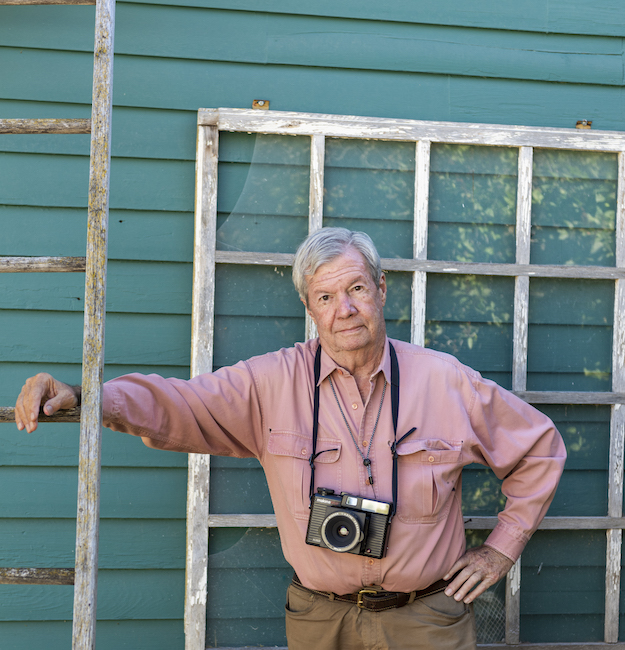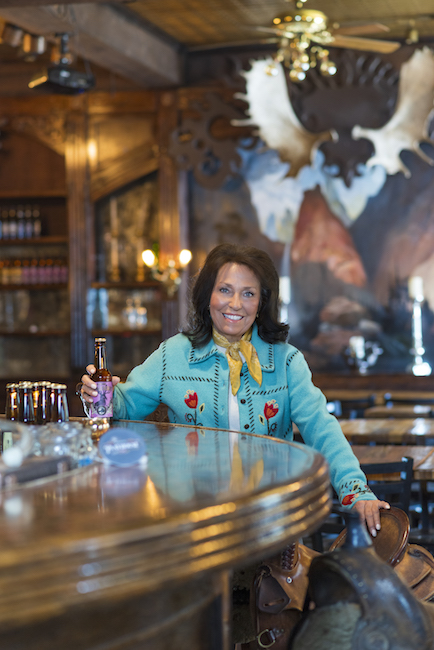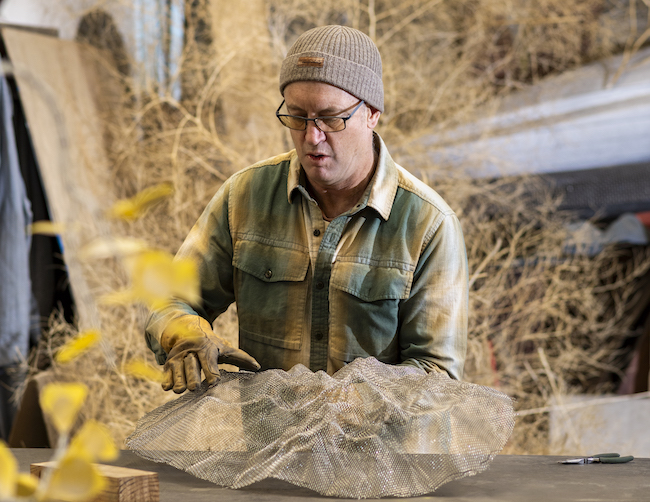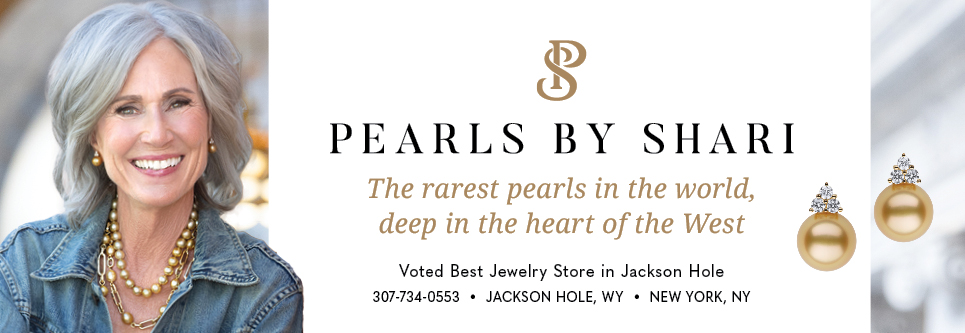Preserving a legacy of conservation
07 Apr 2024
WORDS Brigid Mander | IMAGES David Bowers
Like many kids who grow up in the Jackson Hole valley, Trevor Bloom cultivated an early appreciation for the outdoors, from camping and hiking to climbing, mountain biking and snowboarding. By the time Trevor returned to his home valley after years away for school and work, he was one of the lucky few: he’d created a profession that not only allows him to immerse himself in the outdoors, but also to promote and advocate for the preservation and conservation ethos that was born here over a century ago.
At 33, Trevor is at the forefront of making a difference in conservation and wildlife in the Greater Yellowstone Ecosystem. He spends his time both on the peer-to-peer science and field research side, and in sharing a life-enriching appreciation of nature — and what it takes from humans to keep what currently exists intact — with the public. As a researcher, he began his career path at Lewis and Clark College in Oregon as a biology major and worked in a laboratory specializing in the study of scorpions and spiders. During undergraduate studies, Trevor was awarded a research position with Smithsonian and National Science Foundation on a sailboat-based biodiversity study of arachnids in the Caribbean, during which he discovered two new species of eyeless spiders living deep in caves in the Dominican Republic.
“That got me hooked on ecology,” Trevor says. A Master of Science from Western Washington University in Bellingham, Washington, led to a study on the impact of climate change on high elevation plants — and included his love of the mountains. “I’m interested in climate change of course, but this also allowed me to combine climbing mountains with research,” he says with a laugh.
The study involved a traverse of the Rockies from New Mexico to Jasper, Alberta, Canada, to discover the plants were climbing even higher into the alpine to find cooler temperatures. An ensuing documen- tary was released and titled, “Climb-it Change.” That work also helped pave the way for Trevor to return to the Greater Yellowstone Ecosystem as a professional in his field.
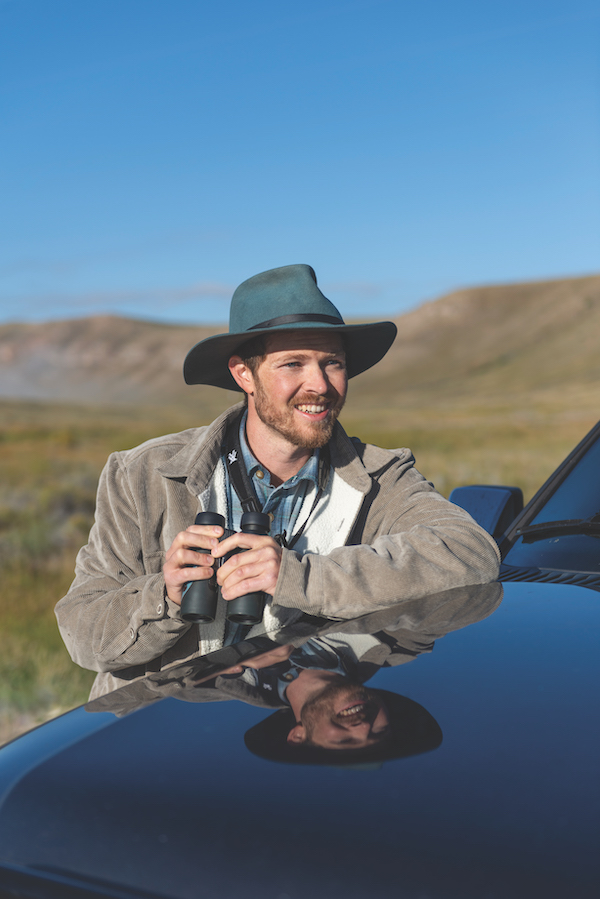
“I’ve always been drawn back to Jackson,” he says. “It’s a testament to what is possible in conservation — the ecosystem has been brought back. Jackson can serve as an example: The fact people had the foresight to fight and protect so much wild land here rather than just develop it — well, we owe it to them to be even more strict today, because there is more pressure to monetize it than ever. So many people advocate for humans, and so few voices protect and speak for the wildlife.”
Since his return, Trevor has upheld that legacy of conservation in earnest with multiple public-facing research and commercial projects. In addition to his work as a research biologist, he founded Guides of Jackson Hole, a specialized, custom wildlife tour guide service in 2018.
“I really wanted to start a company that integrated the ethic of conservation. The wildlife here used to live all across North America, and now, they only still exist here because of conservation,” Trevor says.
“Our guests come from all over the world, we can have an impact through our visitors and teaching the importance of protected lands and wildlife.” Enrichment and education isn’t a dry topic for Trevor. “We blow people’s minds on the tours, and show them a really good time. And I think people inherently do care about nature, especially when educated on why they should care.”
For research, Trevor is an applied ecologist with The Nature Conservancy in Wyoming and Northern Rockies Conservation Cooperative. Current proj- ects — in addition to working at and running the wildlife guide service — include an ongoing study on phenology, or the seasonal timing of ecological events such as when the snowmelts, flowers bloom and bears hibernate, to follow in the footsteps of respected local ecologist Frank C. Craighead, Jr.
Trevor replicated Craighead’s 1971 study and book titled, “For Everything There is a Season: The Sequence of Natural Events in the Grand Teton-Yellowstone Area,” and found that so far, the onset of spring has advanced by 17 days. “The study is ongoing, and it has a citizen science project called ‘WildflowerWatch.’ GrandTetonNational Park leads daily tours that include Wildflower Watch for visitors,” Trevor says. A documentary film on the study, “For Everything There Was a Season,” was released at premieres in the fall around the West, and Trevor plans to submit it to various film festivals.
Another ongoing study is of cheatgrass, an invasive plant originally from Greece and Turkey with devastating ecological impacts to native wildlife — and for fire danger. Trevor’s study takes place on Saddle Butte behind the National Museum of Wildlife Art, where they have planted over 5,000 native plants and displays with information on the research, free and open to the public as part of the Greater Yellowstone Botanical Tour.
The final study consists of 27 game cameras across Bridger-Teton National Forest lands along the greater Cache Creek and Snow King trail system to study human recreation impacts on wildlife behavior in critical habitat areas. “There’s a misconception that recreation is conservation, and that’s not true. We have a tremendous impact on the wildlife,” Trevor says. “So far we have a good coexistence here, but the study is ongoing, and a certain threshold of users may change that. So we hope this study will inform future decisions.” An avid recreationalist as well, Trevor tries to study the balance of mountain sports and wildlife conservation from a scientific perspective to benefit all sides.
The passion and industriousness of Trevor, his team of wildlife guides, and his fellow researchers is an inspiration, and a continuation of the much- needed voices that selflessly advocate for the ecosystem which makes this place special. “What needs to happen today to prevent the loss of this ecosystem in the face of intense human demand is a difficult question,” he says. “To create it was at the expense of people, and it will so be in the future, too. But we can go other places, and the wildlife that live here cannot.”
To see Trevor’s latest documentary, “For Everything There Was a Season,” or schedule of film premieres and festivals, keep an eye on the “Exposure” page at GuidesofJacksonHole.com.





